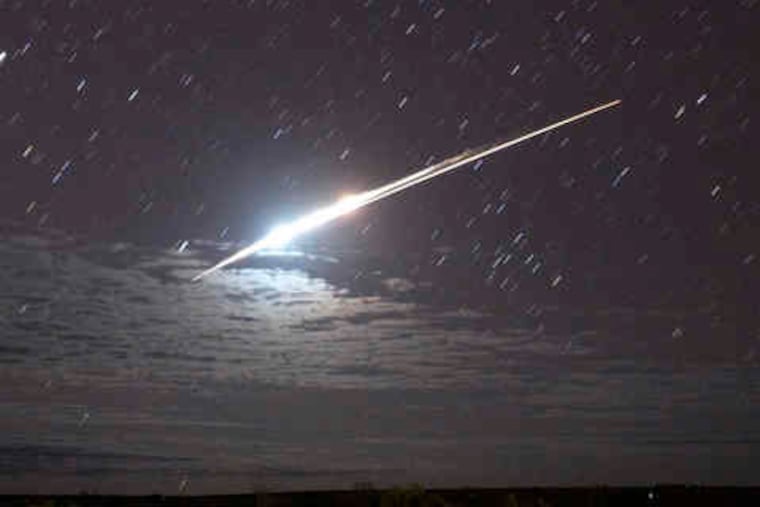Scientists hope capsule's back with asteroid dust
The probe landed in Australia, three years late, and it wasn't clear if its trip succeeded.

ADELAIDE, Australia - A team of scientists flew to the Australian Outback on Monday and recovered a Japanese space capsule that scientists hope contains asteroid samples that will provide clues to the evolution of the solar system.
The Hayabusa explorer returned to Earth overnight after a seven-year, four billion-mile journey, burning off on reentry in a spectacular fireball just after jettisoning the capsule. It was the first time a spacecraft successfully landed on an asteroid and returned to Earth.
Seiichi Sakamoto of the Japan Aerospace Exploration Agency, which launched the explorer in 2003, said scientists were "delighted" to recover the capsule, particularly after a number of technical problems delayed Hayabusa's return to Earth for three years.
"It was an extremely difficult technological challenge, and we did everything to overcome the troubles one by one," he said.
On Monday, two helicopters took scientists to the capsule's landing site in the Woomera Prohibited Area, a remote military zone 300 miles northwest of the South Australian state capital of Adelaide.
The capsule was flown late Monday afternoon to the town of Woomera, where it will be prepared over several days for a flight to Japan, NASA scientist Scott Sandford said by telephone from the scientists' base in Woomera.
"It'll be some time before we know if we've got sample, and if so, how much," Sandford said. "I don't think we can assume anything."
Hayabusa reached an asteroid called Itokawa in 2005. After taking photo images from all angles of the 1,640-foot-long asteroid, Hayabusa landed on it twice in late 2005.
The craft was designed to shoot a bullet into the surface of the asteroid that would propel material through a long tube into a sample-collection container.
There is no certainty the bullet actually fired, scientists said, but they believe even the impact of the tube's landing would have forced some material upward and into the collection chamber.
"We have perhaps a 50 percent chance" of retrieving samples, Sakamoto said.
The Japanese space agency said the aim of the $200 million project was to understand the origin and evolution of the solar system, as well as paving the way for future sample return missions.
Sakamoto said any samples from an asteroid, considered the building blocks of planets, could also shed light on the origins of Earth.
Hayabusa was originally due to return to Earth in 2007 but a series of glitches - including a deterioration of its ion engines - forced it to miss its window to maneuver into Earth's orbit until this year.